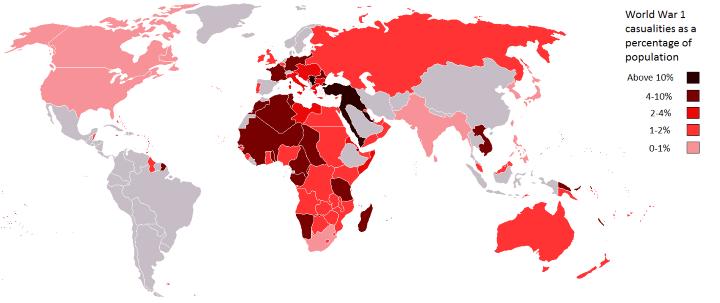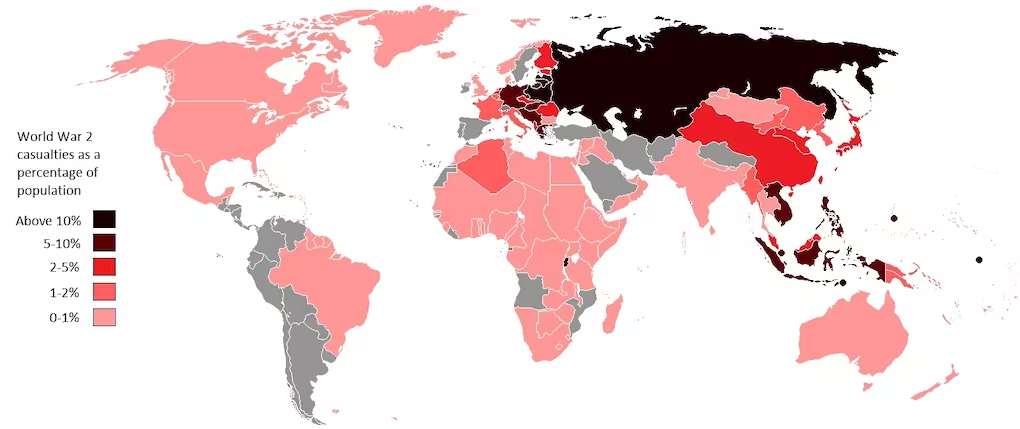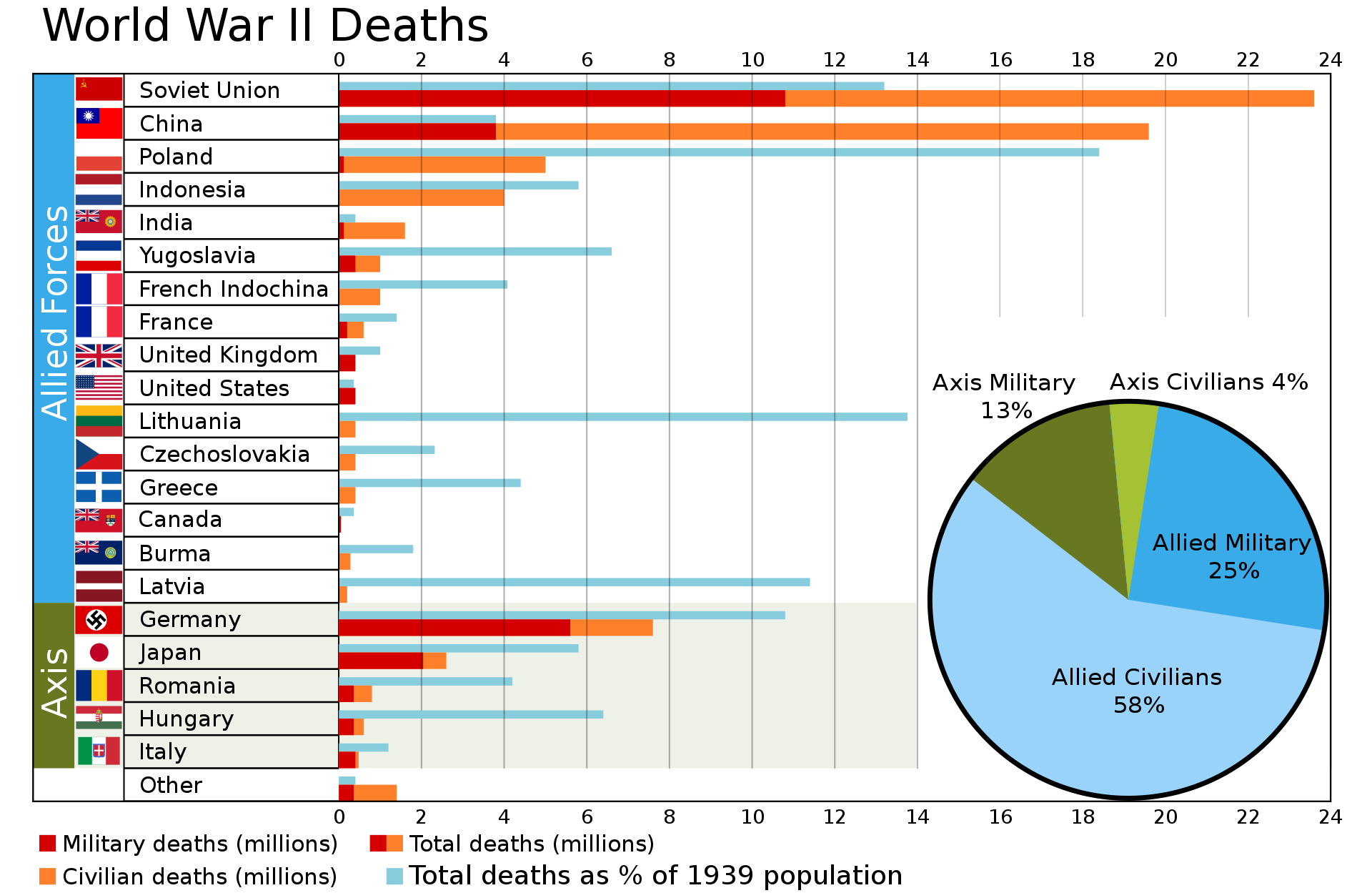
By Saeed Mirshekari
November 27, 2023


Access O'Mentors
Top Data Scientist Mentors from Fortune 500 Companies excited to help you out 1-on-1!
1️⃣ Explore freely
→
2️⃣ Apply confidently
→
3️⃣ Pay securely
→
4️⃣ Book instantly
Introduction
The Middle East, a region of historical significance and geopolitical complexity, has been marked by a series of conflicts that have shaped its trajectory. In this research blog, we will delve into the statistics of wars in the Middle East, examining the figures and historical contexts of key conflicts. From ancient rivalries to modern geopolitical struggles, the region's wars paint a complex picture of intertwined histories and diverse challenges.
In each section below there is a link to the number of deaths during each conflict in the Middle East. Below is the numbers of casualty in WWI & WWII for comparison:



I. Ancient Conflicts in the Middle East
Ancient Mesopotamia, the cradle of civilization, was not immune to conflicts. From the Sumerian city-states to the Babylonian and Assyrian empires, the region witnessed numerous wars, although comprehensive statistics are challenging to ascertain due to the limited historical records.
The ancient conflicts in the Middle East were often driven by territorial disputes, struggles for resources, and the quest for dominance. The rise and fall of empires, including the conquests of Alexander the Great, further contributed to the region's dynamic history.
II. Ottoman Empire and World War I
The collapse of the Ottoman Empire in the early 20th century was a pivotal moment in Middle Eastern history. The empire's involvement in World War I led to significant casualties, although precise figures vary. The Ottoman casualties in the war are estimated to be in the hundreds of thousands.
The Ottoman Empire's participation in World War I on the side of the Central Powers led to the Gallipoli Campaign and conflicts in the Arabian Peninsula. The war's aftermath saw the emergence of new nation-states in the Middle East, with the Sykes-Picot Agreement shaping the region's post-war geopolitical landscape.
III. Arab-Israeli Conflicts
The Arab-Israeli conflicts, including the wars of 1948, 1956, 1967, and 1973, have been defining moments in the modern history of the Middle East. The casualty figures for these conflicts vary, with hundreds of thousands of military and civilian casualties.
The Arab-Israeli conflicts are rooted in the establishment of the State of Israel in 1948 and the subsequent territorial disputes. The Six-Day War in 1967 and the Yom Kippur War in 1973 further intensified tensions. The conflicts continue to influence regional dynamics and peace negotiations.
IV. Iran-Iraq War
The Iran-Iraq War (1980–1988) was a protracted conflict with significant human and economic costs. Casualty figures for the war vary, but estimates suggest hundreds of thousands of military and civilian casualties on both sides.
The Iran-Iraq War emerged from longstanding territorial and ideological disputes. Iraq, led by Saddam Hussein, sought to take advantage of post-revolutionary chaos in Iran. The war had profound consequences for both nations and left scars that persist to this day.
V. Gulf War and Its Aftermath
The Gulf War (1990–1991), triggered by Iraq's invasion of Kuwait, had a significant impact on the region. Casualty figures for the war are comparatively lower, with thousands of military and civilian casualties.
The Gulf War was a coalition effort to liberate Kuwait from Iraqi occupation. While the war achieved its immediate objectives, it had lasting consequences, including the imposition of sanctions on Iraq. The war's aftermath set the stage for ongoing geopolitical tensions in the region.
VI. Iraq War and Post-Invasion Period
The Iraq War (2003–2011) and its aftermath were marked by complex dynamics, including insurgency, sectarian violence, and foreign interventions. Casualty figures for the Iraq War vary, with estimates ranging from hundreds of thousands to over a million.
The Iraq War was initiated by the United States-led coalition based on claims of weapons of mass destruction (WMDs) in Iraq. The post-invasion period saw challenges in governance, sectarian tensions, and the rise of extremist groups, contributing to the region's instability.
VII. Syrian Civil War
The Syrian Civil War, which began in 2011, has resulted in significant human suffering and displacement. Casualty figures for the conflict are challenging to determine accurately but are estimated to be in the hundreds of thousands.
The Syrian Civil War erupted as part of the broader Arab Spring uprisings. The conflict involves a complex web of internal and external actors, including the Syrian government, rebel groups, and international powers. The war has led to a humanitarian crisis and reshaped regional geopolitics.
VIII. Yemeni Civil War
The Yemeni Civil War, ongoing since 2014, has resulted in a dire humanitarian situation. Casualty figures for the conflict, including both direct violence and indirect consequences like famine, are challenging to quantify accurately.
The Yemeni Civil War involves multiple factions, including the Houthi rebels and the Yemeni government, with regional powers supporting different sides. The conflict has exacerbated existing challenges, leading to a humanitarian crisis and complex regional dynamics.
IX. Ongoing Challenges and Future Perspectives
The Middle East continues to grapple with ongoing challenges, including conflicts, political instability, and humanitarian crises. As the region navigates its complex geopolitical landscape, addressing the root causes of conflicts and fostering diplomatic solutions remain crucial for a more stable and prosperous future.
Conclusion
The statistics of wars in the Middle East reveal a tumultuous history marked by ancient rivalries, geopolitical struggles, and modern conflicts. From the ancient civilizations of Mesopotamia to the contemporary challenges of the Syrian Civil War and Yemeni Civil War, the region has experienced a complex tapestry of wars that have shaped its destiny. Understanding the figures and historical contexts of these conflicts is essential for fostering awareness, promoting dialogue, and working towards a more peaceful and stable Middle East.